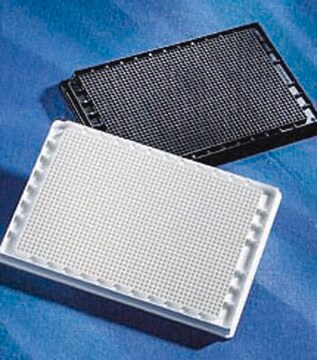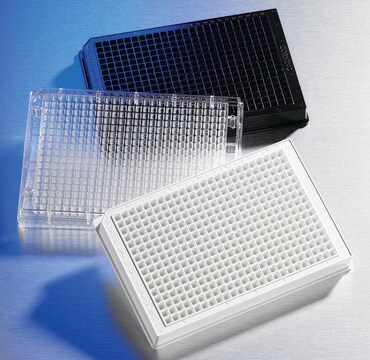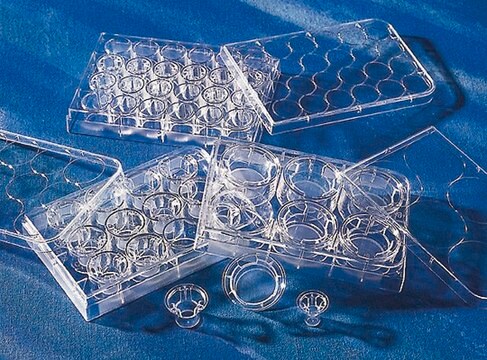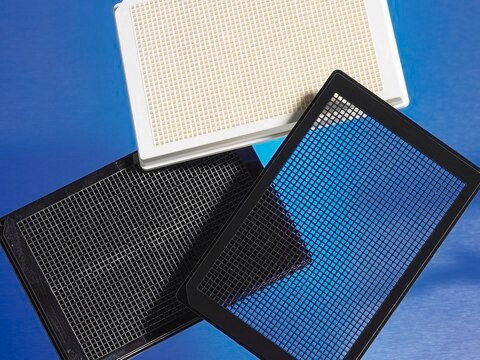CLS3936
Corning® 1536 well plates
non-treated (medium bind), 50/cs, round bottom black polystyrene wells, non-sterile, lid: no
Sinónimos:
1536 multiwell plate, 1536 well microplate, 1536 well microtiter plate, 1536 well plate, HTS plate, TC-treated plate, immunoassay plate, tissue-culture treated plate
About This Item
Productos recomendados
material
black plate
polystyrene plate
round bottom black polystyrene wells
sterility
non-sterile
feature
lid: no
skirt
packaging
pack of 10
case of 50
manufacturer/tradename
Corning 3936
maximum volume
10 μL
size
1536 wells
working volume
8 μL
color
black
suitability
suitable for (fluorescent; luminescent assays)
binding type
non-treated surface
¿Está buscando productos similares? Visita Guía de comparación de productos
General description
- 1536 well polystyrene plates
- Low background fluorescence, minimal light scatter and reduced crosstalk
- Excellent signal dynamic range due to low background fluorescence and enhanced signal intensity
- Opaque walls to prevent well-to-well crosstalk
- Flat well bottoms possess superior flatness -minimizes variability within a plate and between plates
- Round well bottoms for reduced air entrapment and improved CV′s and Z factor
- Raised well bottoms for high sensitivity
- Flood reservior on four sides to reduce instrument contamination
- Suitable for fluorescent and luminescent assays
- Black wall plates have low background fluorescence, minimal light scatter and reduced crosstalk
- Not treated (or medium binding) polystyrene surface is hydrophobic in nature and binds biomolecules through passive interactions
- Is suitable primarily for the immobilization of large molecules, such as antibodies, that have large hydrophobic regions that can interact with the surface
- Untreated microplates have a binding capacity of approximately 100 to 200 ng IgG/cm2
- Recommended working volume of up to 8 μL
- Conforms to standard microplate footprint and dimensions
Legal Information
Certificados de análisis (COA)
Busque Certificados de análisis (COA) introduciendo el número de lote del producto. Los números de lote se encuentran en la etiqueta del producto después de las palabras «Lot» o «Batch»
¿Ya tiene este producto?
Encuentre la documentación para los productos que ha comprado recientemente en la Biblioteca de documentos.
Los clientes también vieron
Nuestro equipo de científicos tiene experiencia en todas las áreas de investigación: Ciencias de la vida, Ciencia de los materiales, Síntesis química, Cromatografía, Analítica y muchas otras.
Póngase en contacto con el Servicio técnico




